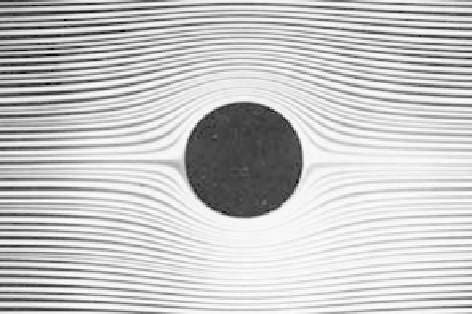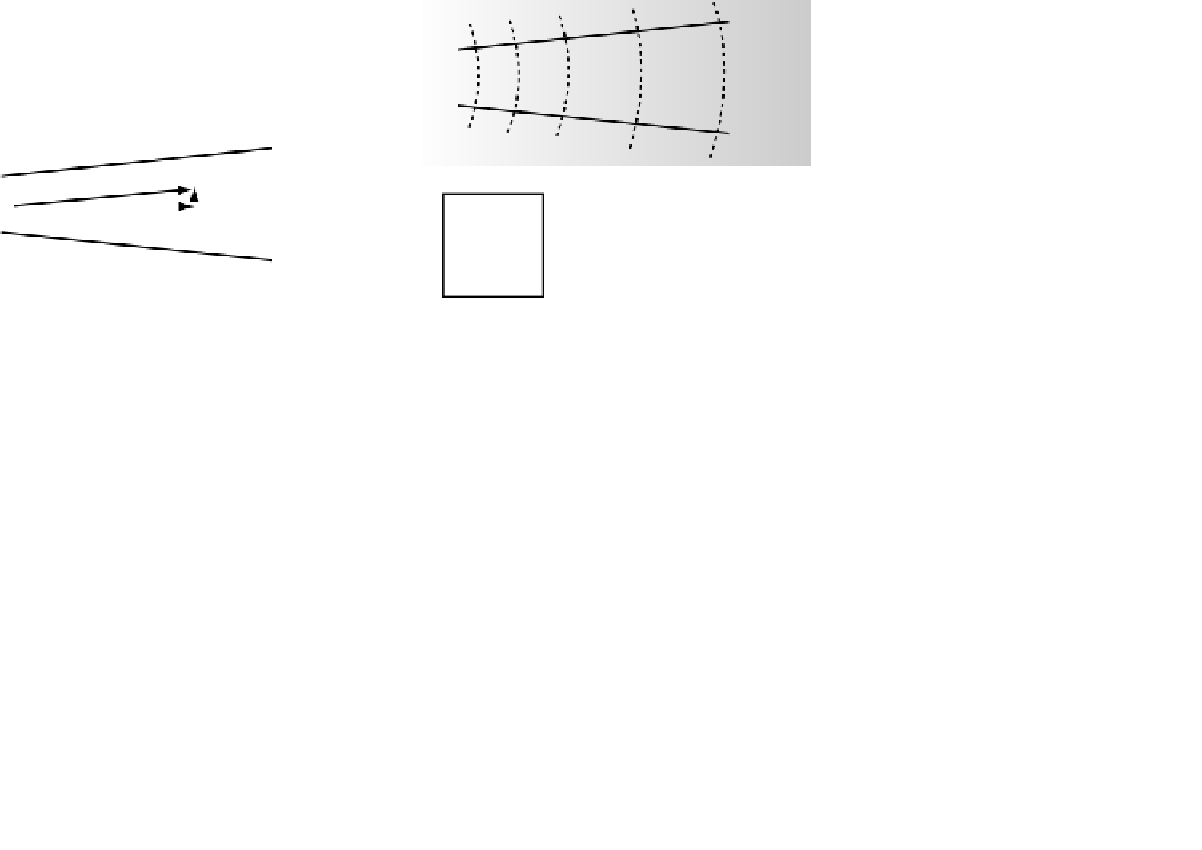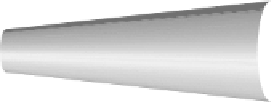Geoscience Reference
In-Depth Information
(a)
(b)
Cylinder axis
normal
to page
Fig. 2.19
Flow visualization photos. (a) Dye introduced continuously into flow through jets at left define streamlines of laminar flow around a
stationary solid cylinder. (b) Streak photograph of aluminum flakes on the surface defines a pattern of convection in a counterclockwise rotating
cylinder pan that is being heated at the outside rim and cooled in the center. Flow pattern is analogous to the circulation of the upper atmosphere.
A streamtube is an imaginary, rigid, impermeable
tube that transmits the same discharge out as
received in. It allows velocity to have 3D
components
Equipotential lines
,
f
, are drawn normal to
streamlines
,
Ψ,
with
their spacing proportional to velocity. The closer the lines the
faster the flow. The combination of streamlines and equipo-
tential lines defines a
flow net
IN
OUT
f
5
f
4
f
3
f
2
f
1
Ψ
2
Streamlines,
Ψ
1-2
define a 2D section through the
streamtube. They allow velocity,
u
, to have two components:
u
and
v
in this case.
Ψ
1
Ψ
2
u
w, z
w
IN
OUT
Components
of the velocity,
u
u
Ψ
1
u, x
The discharge in and the discharge out are identical. As the
streamlines diverge the flow velocity must lessen down tream,
vice
versa for convergence
.
So velocity is proportional to
streamline spacing
Fig. 2.20
Streamtubes, streamlines, and potentials.
compared to contour lines on a map where the direction of
greatest rate of change of height with distance is along any
local normal to the contours (gradient of the scalar height).
The velocity is the gradient of
If the distance between equipotential lines and
streamlines is made close and equal, then the resultant
pattern of small squares is known as a
flow net
(Fig. 2.20).
Construction of flow nets for flow through various 2D
(Cookie 1).


















Search WWH ::

Custom Search